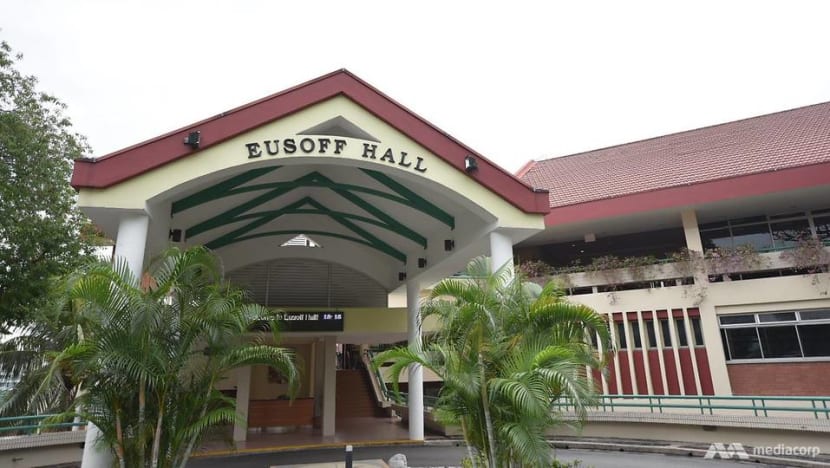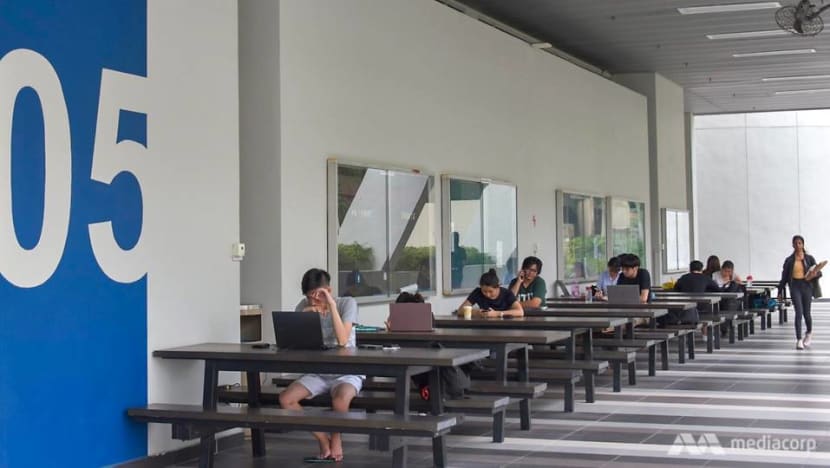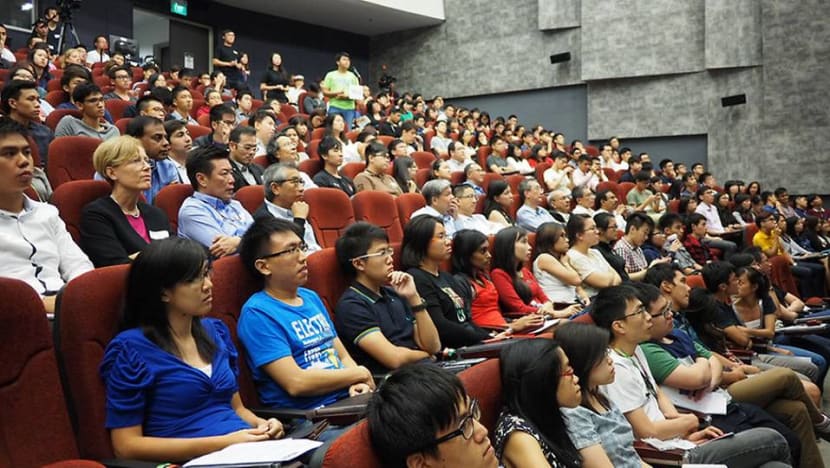commentary Commentary
Commentary: The tightrope universities walk in tackling orientation activities like the 'kukubird' controversy
Universities exist within a wider social milieu. Administrators and students cannot afford to ignore the wider repercussions of these activities beyond campus bounds, says the National Institute of Education’s Jason Tan.

File photo of Nanyang Technological University (NTU Singapore) undergraduates studying at the benches. (Photo: Alif Amsyar)
SINGAPORE: A recent viral video of students at a university orientation camp has stirred up controversy.
The video showed students gyrating and chanting a slang word, “kukubird”, relating to the male genitalia.
These activities have generated huge controversy for six key reasons.
REASONS FOR THE OUTRAGE
First, it is important to recognise that such activities are reminiscent of hazing or ragging incidents found in many countries around the world.
These terms refer to a variety of rituals and activities involving harassment, abuse, embarrassment or humiliation used as a way of initiating individuals into a group. Such activities range from relatively benign pranks to unacceptable acts of criminal misconduct.
Second, the persistence of these activities, despite their drawing some social opprobrium from participants as well as the general public, points to deeper and fundamental factors at work that account for their enduring nature.
Third, university students are widely regarded as the elite of the entire education system who are posed to enter the professional and managerial ranks of the workforce.
The fact that some of them choose to subject other students to what some might regard as juvenile, immature or even offensive activities raises hackles among people who expect higher standards of behaviour.
Fourth, the emergence in recent years of social media has enabled such incidents to gain wide and rapid publicity, thus fuelling the controversy.
Fifth, the recent furore over sexual harassment in local universities, along with a call from the Education Minister Ong Ye Kung for universities to take more serious action against offenders, has cast the spotlight on these orientation camp activities.

READ: Commentary: Here’s what zero tolerance towards sexual misconduct looks like
Last, there are also those who feel that such activities adversely affect the reputation of the universities.
HOW STUDENTS SEE SUCH ACTIVITIES
But consider the purpose of university orientation camps and what they might mean to most university freshmen.
They aim to ease the transition of new students into the routines and challenges of university life.
These include adjusting to living away from home, enjoying personal autonomy after many years of undergoing relatively more regimented schooling, and coping with the demands of university courses.
These camps also try to build team spirit and affiliation with a hall of residence or a particular faculty.
However, there are those who argue that some of these camp activities try to enforce social conformity and may alienate students who find them inappropriate or demeaning.
Students who choose not to participate in activities may be denigrated or ostracised.
In fact, some of the activities such as the “kukubird” chant, veer very close to actions that might attract criminal prosecution if they were imposed on individuals outside the context of orientation camps.

READ: Commentary: Terms like ‘lucky boy’ and ‘men will be men’ are problematic double standards
So what makes them acceptable within the setting of university orientation camps?
These are relatively harmless activities typical of students in that particular age group, some would argue.
After all, there is no ill-will or malice intended towards participants, and by discarding their inhibitions, new students will be better able to bond with each other and with their seniors.
Furthermore, many of these students are young adults of legal voting age and should therefore be accorded trust in exercising their judgement when planning orientation activities.
THE SEXUAL NATURE OF THESE CHANTS
A great deal of attention has been drawn to the sexualised nature of the “kukubird” chant.
We have to remember that these students (with the exception of international students) have gone through sexuality education programmes in both primary and secondary schools as part of the Ministry of Education’s Character and Citizenship Education policy.
Such programmes aim to engage students in discussing the physical, emotional, social and ethical dimensions of their emergent sexuality, so that they may develop healthy and responsible relationships, and sensitise them to signs of sexual abuse.

The Education Ministry, however, recognises that parents play the primary role in sexuality education and allows them to withdraw their children from these school programmes.
Why then do such sexualised activities persist in university orientation camps?
If these camps aim to initiate new students into university life, as well as foster social cohesion, then one might question the need to include activities that make tasteless references to genitalia and sexual acts.
The fact that such activities are found in a variety of countries testifies to the ongoing use of sexual innuendo as a form of exerting power over new students.
Powerful social taboos against discussing sex openly probably contribute to the effectiveness of such activities in shocking and embarrassing students.
WHAT IS THE UNIVERSITY’S ROLE?
How then might university academics and administrators respond to these activities?
University academics generally do not regard themselves as playing a custodial role in the way that primary and secondary school teachers do. The vast majority of them (with perhaps the exception of hostel wardens) would prefer a “hands-off” attitude.
In the light of the recent public discussion over sexual harassment on university campuses, university administrators will need to debate the degree of autonomy accorded to orientation camp leaders.
READ: Commentary: All this anger over voyeurism but what we need is respect
READ: Commentary: University campuses must be safe places for all
On the one hand, the students are young adults who need to be given respect and a relatively free hand in designing and carrying out orientation camp activities.
On the other hand, such sexualised activities border on sexual harassment and have been repeatedly been subject to public criticism around the world.
Merely making participation in these activities optional is far from sufficient.

A prime task would appear to be that of sensitising orientation camp organisers to the social norms regarding the appropriateness of their activities and whether it is still necessary, in the name of good fun, to continue using such activities as a means of breaking down boundaries between students and fostering a spirit of camaraderie and inclusivity on campuses.
University administrators will need to walk a tightrope whenever incidents such as the “kukubird” chant controversy occur.
They will have to strike a delicate balance between allowing students autonomy in organising orientation camp activities and drawing the line when it comes to activities that violate social norms about decency, decorum and tastefulness.
After all, universities exist within a wider social milieu and neither administrators nor students can afford to ignore the wider repercussions of these activities beyond campus bounds.















